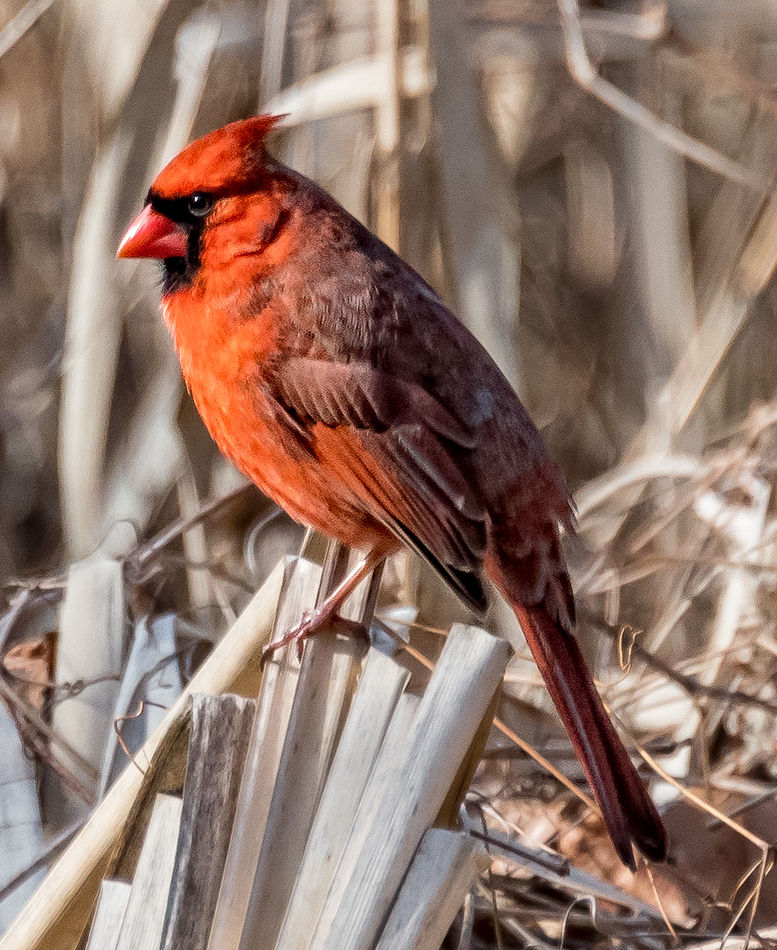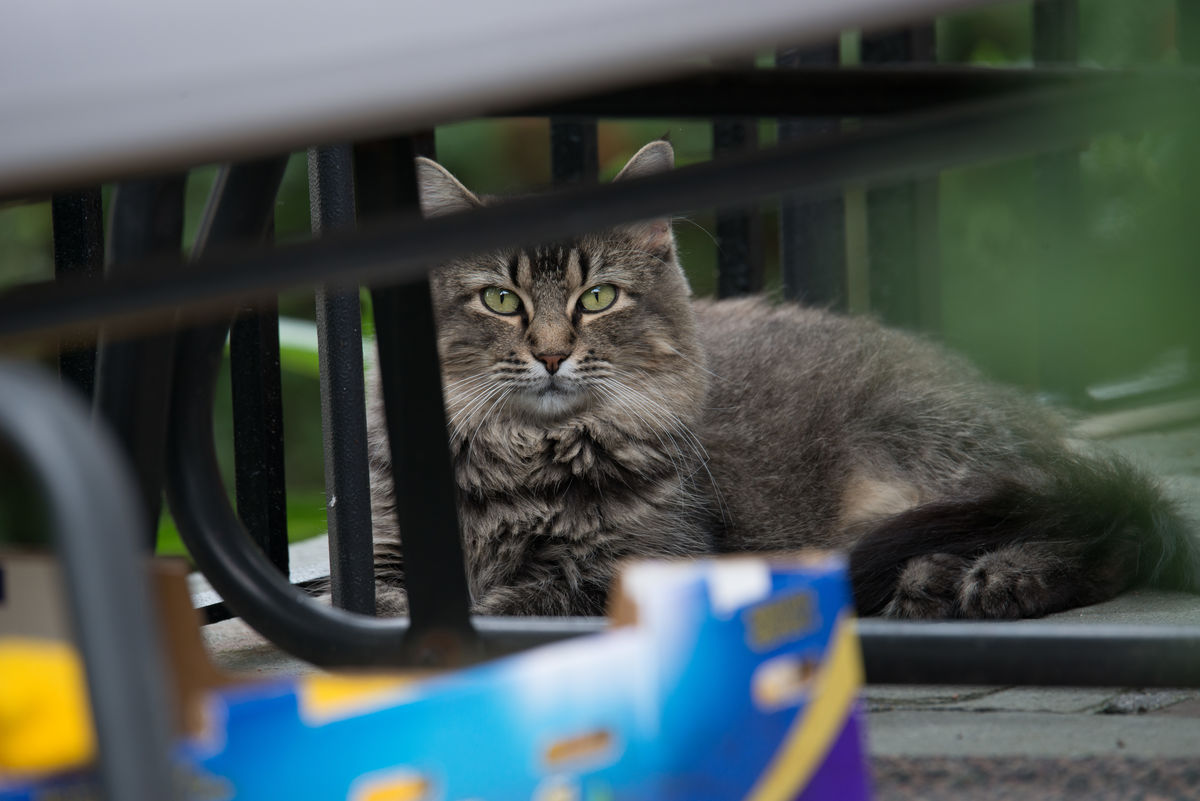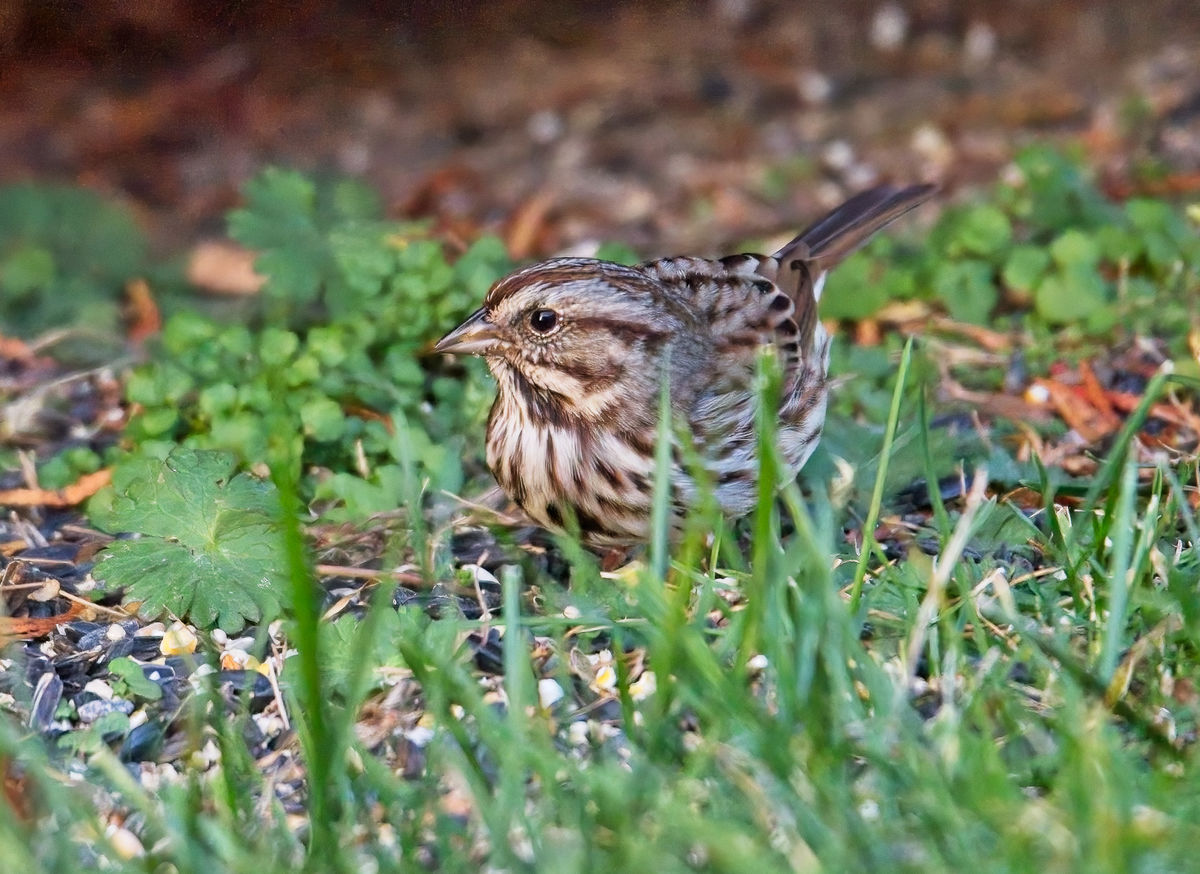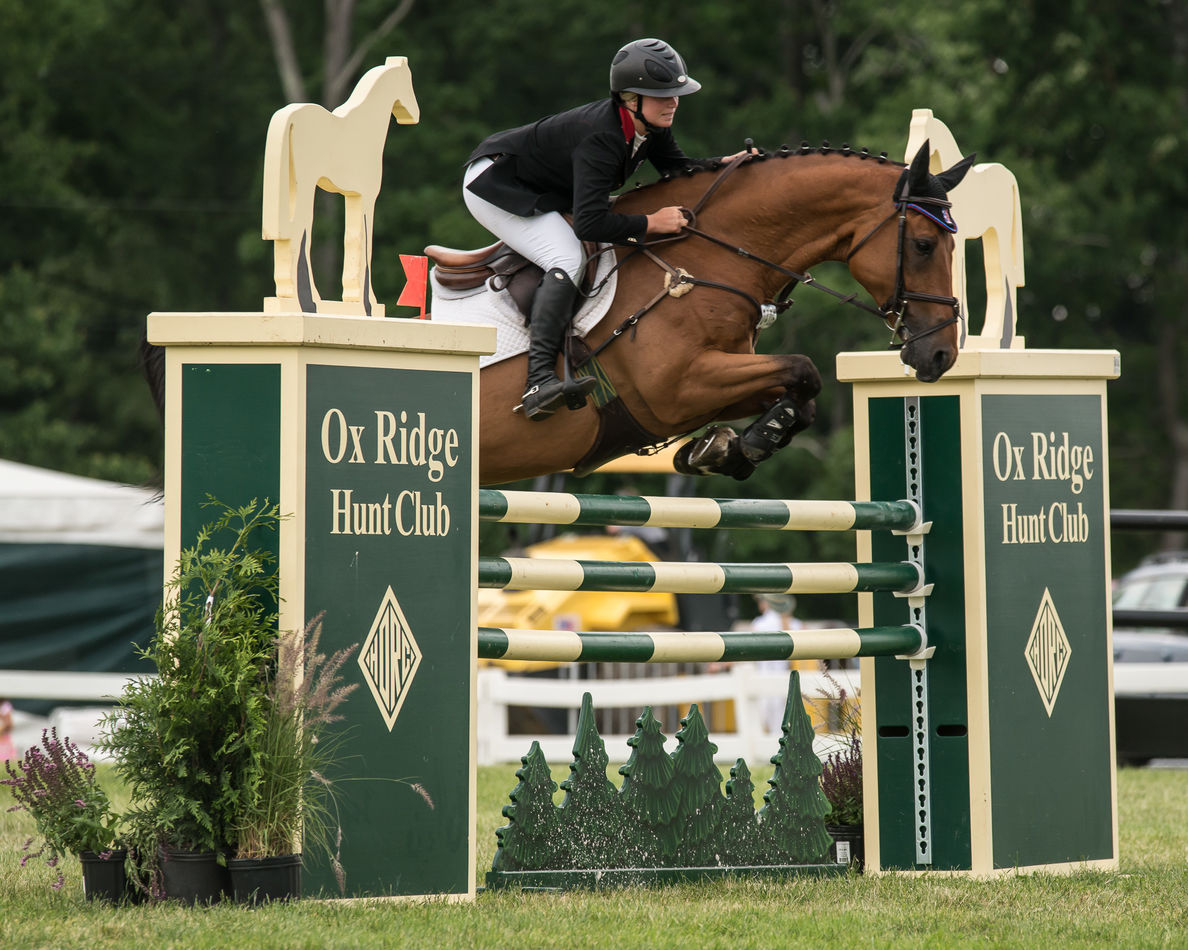Question on Low Light Performance Nikon D850 vs Z9 vs D5 vs D6
Feb 14, 2022 12:40:30 #
Feb 14, 2022 12:59:18 #
MadMikeOne wrote:
Fortunately, we have lots of experience available here on UHH. I'm not asking about charts, long-winded scientific comparisons and the like. Hence my post here on the Hog. As I stated in my OP, the ONLY models under consideration were the 4 I mentioned. The D4 had been ruled out.
Thanks, anyway, though.
Thanks, anyway, though.
First of all, I referred to the D4s, NOT the D4. Second, please feel free to buy what YOU want. Best of luck.
Feb 14, 2022 13:23:53 #
cjc2 wrote:
First of all, I referred to the D4s, NOT the D4. Second, please feel free to buy what YOU want. Best of luck.
Neither one made the short list I included in my OP.
Feb 14, 2022 13:51:14 #
MadMikeOne wrote:
Neither one made the short list I included in my OP.
IDC! as I said, please buy what you want.
Feb 14, 2022 14:37:12 #
MadMikeOne wrote:
Hi all, br br A friend & I are trying to make... (show quote)
Other issues which I don't see in the prior answers (or reflected in your question) are whether you will be able to fill the sensor with your image (ie. will you have to crop) and the availability of the software to process the Z 9 images. I haven't done scientific tests but it appears to me that I was better off with my D500 then my Z 9 raws in low light, but I blame part of this on the fact that DxO and Topaz DeNoise haven't updated their software yet to handle the Z 9 raw files (both of which I would routinely use on my D500 images). And I am routinely cropping my images from the Z9 more than with the D500. I also think this is applicable to your question on why a D850 is better than a D500 in low light whereas the pixel density is very close. If the image on the D850 is cropped to that taken by a D500, I think the noise will be very similar.
If you are primarily concerned about shooting in low light, is it feasible to get faster lenses? For example, when I go out close to dusk, I try to use a f/2.8 lens and shoot with a tripod for longer exposures. Some low light images (ie. high ISO) with the D500:
Feb 14, 2022 15:46:59 #
MadMikeOne wrote:
Hi all, br br A friend & I are trying to make... (show quote)
If you are looking to compare cameras with different resolutions, you should be downsampling to the lowest common denominator - which is not the same as cropping. Downsampling (aka resampling to a lower resolution), preserves most of the detail of the hi res capture, and it will average out the noise among pixels - to provide a good basis for comparison.
Here is a technical description of how this happens, and it discusses 4 types of noise that are mitigated when downsampling
https://photographylife.com/why-downsampling-an-image-reduces-noise
If you are printing, there is no need to consider the D500 because it just can't compete with the other cameras you have mentioned - especially if you want to compare uncropped images. The reason being that an uncropped image from a D500 would have to be magnified considerably more to achieve the same print size - it is not so much about pixel density. But a 45 mp image resampled to 20.6 mp would likely be no noisier, and likely record more detail that will still be visible in the downsampled image.
As far as mirrorless cameras are concerned, the hybrid, high performance focusing systems are better than even what is in the D6 or the D850, and all three mfgrs - Sony Nikon and Canon have competing systems - and they are desirable over the DSLR - which, by comparison, is not as consistent and not as accurate due to the nature of phase detect AF systems.
Feb 14, 2022 16:02:28 #
MadMikeOne wrote:
.. The ONLY models under consideration are the D850, D5, D6 , and Z9. The main reason for wanting to add a new camera is for better performance in low light. Our main subjects are birds, BIF, and wildlife...
I do not have a D850, D6, or Z9 so I can't really give you a comparison. I have a D4 and a D5.
The D5 handles high ISO better than the D4, but the advantage is really marginal. When the D6 came out I thought about it but, having retired, I don't shoot many events any more and the D6 specs looked to me to be really minor increments over the D5. Probably more in-camera image processing, since we're pretty close to the quantum limit in sensors.
I use my D4 for normal work and only use the D5 when (1) I really need high ISO or (2) I left my D4 at home or (3) it has the wrong lens on it for a quick shot (I tend to keep the D4 and D5 in my bag with different lenses to minimize lens swapping time).
In my opinion, the D4 is good to ISO 50K and the D5 to ISO 100K. That is for event shooting, where most of the shots are used for PR and are shown on websites or in newsletters, so there's a lot of downsampling going on before publication. When I had a D3, I tried some experiments. The D3 was good (for my purposes) to 25K, but I could get good shots (with a lot of post work) at 50K or even 100K, but only if I could have gotten the shot at 25K. Going to too high ISO led to color shifts that were difficult to deal with in post. I have not done the same level of experimentation with the D5.
I used the D4/D5 combo at my daughter's wedding last year but I limited the ISO to 10K-20K (reception, poor lighting).
Have you considered renting? Get the cameras you're most interested in and set up some test shots to see how they perform. You might not be able to do that in the wild with the BIF shots but maybe a frisbee? With a decor that will give you something to resolve?
Feb 14, 2022 17:26:45 #
R.G. wrote:
If you have a look at url=https://www.dxomark.com... (show quote)
So, nothing in reply to the OP ? No experience, not even by your dentist’s cousin’s bitcoin broker ?
Feb 14, 2022 20:24:19 #
ricardo00 wrote:
Other issues which I don't see in the prior answer... (show quote)
Thank you so much for your well thought out and presented response. You've reinforced some of what I thought, and have given me something else to think about.
Would that it were feasible for me to get faster lenses. First, the cost is beyond what I could justify for my hobby. Second, I prefer to shoot handheld due to my usual subjects. As strong and as steady as I still am, there is no way I could shoot handheld with a long (500 to 600) fast prime.
Feb 14, 2022 20:47:46 #
DirtFarmer wrote:
I do not have a D850, D6, or Z9 so I can't really ... (show quote)
Thanks for sharing your personal experiences & thought processes. It was really helpful. My PP skills are very limited, and my feeling is that if a shot is going to need more than the bare basics, I would either not take the shot, or I'd delete it. This is strictly a hobby that I love. It's the photography part that I love! PP - well, not so much!
Renting isn't all that practical for several reasons. The main one being that I really need to be out in the field and put a camera through its paces for a longer period than I'd want to pay the rental charges.
Feb 14, 2022 21:01:14 #
Gene51 wrote:
If you are looking to compare cameras with differe... (show quote)
Gene, thanks so much! I was hoping you'd chime in with your cut-to-the-chase expert take. I'd forgotten about downsampling, but when I read this response, I did recall that you'd talked about it in past responses to other members. I will definitely read the article in the link you provided.
I DO print, sometimes quite large, so that IS something I need to very seriously consider. Posting on social media is something I very rarely do. Thanks for that info.
You did a great job of clearly explaining the difference in the focusing systems in the DSLR's vs. the mirrorless. I never thought of the mirrorless focusing system as a hybrid. Thanks to Steve Perry's eBooks (I have all but the ones on mirrorless), I know about phase detect AF systems.
Thank you again - more to seriously consider.
Feb 14, 2022 21:25:42 #
MadMikeOne wrote:
Thank you so much for your well thought out and presented response. You've reinforced some of what I thought, and have given me something else to think about.
Would that it were feasible for me to get faster lenses. First, the cost is beyond what I could justify for my hobby. Second, I prefer to shoot handheld due to my usual subjects. As strong and as steady as I still am, there is no way I could shoot handheld with a long (500 to 600) fast prime.
Would that it were feasible for me to get faster lenses. First, the cost is beyond what I could justify for my hobby. Second, I prefer to shoot handheld due to my usual subjects. As strong and as steady as I still am, there is no way I could shoot handheld with a long (500 to 600) fast prime.
I'm 70 and at this point in my life I am fortunate that I can still hand hold my long lens for birds and wildlife. Optical stabilization, and the ability to shoot at high ISO thanks to some of the new software out there (I use DXO Prime and On1 NoNoise), makes it possible to shoot using F7.1 or F8, 1/1000 sec or faster and still get decent detail in my images.
You can talk yourself into or out of anything you want. My experience has been that the D500 doesn't hold a candle to even a D800 for birds, especially if you need to crop, and most of the time, even with a static subject you can never get close enough.
First image below is a best shot of a male cardinal with a D500 and a 28-300 (which a lot of people swear by, but I swear at, but the softness in this case is not caused by the lens - the camera lacks the necessary resolution).
Second image is the same bird using a Sigma Sport on a D800, and as you can see there is no comparison. In marginal light it quickly goes downhill for the D500. Both images were hand held.
Third image was taken with 150-600 Sigma Sport also on a d800 hand held at 1/25 sec - zoomed to 600mm at around the minimum focus distance -
Fourth image is a crop of the third -
Fifth is a blackpoll warbler, D800, heavy crop, ISO 2000 - hand held
sixth and seventh are Sigma 150-600 Sport, hand held, ISO 12800, uncropped then heavy crop - all hand held.
The D850 and the Z9 will be a lot better, as long as you put a sharp lens - zoom or prime. I used to have a 600mm F4 AF-S II and it was very sharp, but it also weighed about 11.2 lbs, which was too heavy for hand holding. The Sigma Sport was the lens I selected as a replacement - so I would not give up any image quality and be able to hand hold it. The D810 is pretty decent at ISO 12800, but from what I've seen the D850 is even better. By association the Z9 should be at least as good. You can pretty much dismiss the D500 - it was ground breaking when it was released, but simply cannot complete with the big boys when the light sucks, or when you have to crop because you can't get close enough - which is 75% - 90% of the time.
Feb 14, 2022 21:39:27 #
Gene51 wrote:
You can talk yourself into or out of anything you ... (show quote)
My main bird and wildlife lenses are my Nikon 500mm PF and my Tamron 150-600 G2.
Thank you for posting your shots for comparison. Wow, what big differences! I'm beat right now and will take a deeper dive tomorrow. When I bought my D500 back in 2017, it was to trade up from my D7200. The big reason for upgrading back then was that I needed, not simply wanted, a much larger buffer. My D7200 would bog down at the worst possible times for a bird photographer.
You are definitely steering me in the right direction here. Thank you for sharing your professional opinion coupled with personal experience. BTW, I agree with you on the 28-300.
Feb 14, 2022 21:48:59 #
kpmac wrote:
I can only compare my D850 to my crop D7200. The D850 is much better in low light. I know that doesn't help much.
Actually, it does help. I still own and use my D7200. Do you use your D850 in FX and in DX mode? If so, do you see a difference in low light performance between the two modes?
Feb 15, 2022 06:30:23 #
MadMikeOne wrote:
My main bird and wildlife lenses are my Nikon 500m... (show quote)
You're welcome. There are many rabbit holes on this forum, and lots of keyboard commandos that can look up this or that in an instant - but only a few take the time to illustrate with their own images, what they are trying to say.
I agree that the D500 is a substantial upgrade over the D7200, but the way I do bird photography is to time my shots as opposed to rely on burst rate and buffer.
A funny story. I used to help a friend shoot Hunter/Jumper horse competitions. His goal was to shoot at least 4-8 shots of every participant throughout the day, on different courses and settings. I was there using a D300 (about 6 fps burst), and an old-school Nikkor 80-200 F2.8 AF-D. This guy shows up and stands next to me - he was showing off his brand new Canon 1D Mk II that had a burst rate over 14 fps, ($6800) and his 100-400. My approach was to prefocus on the center of the jump bar, and just wait for the shot. After a while you could almost shoot with your eyes closed, because the horse's gait would change as it lifted itself over the jump. After a few days I was getting about a 95% hit rate, and rejects were not because of timing, but because of the rider or the horse not being in the optimum posture or focusing on the jump. The Canon guy would just leter 'er rip - shooting off a burst of about 20-30 shots for each burst - to my single shot. After the event we were shooting finished I saw him looking dejected - shaking his head as he reviewed his shots. He was both curious and smug as he asked to look at the back of my camera. The smugness turned to horror as he reviews my images - with nearly every one of them with the horse and rider exactly where they were supposed to be, in focus, and on the smaller jumps, timed so the horse's front legs were tight to its belly and right over the jump bar, and the hindquarters were just lifting off the ground. He just shook his head, handed me back my camera and quietly walked away.
If you want to reply, then register here. Registration is free and your account is created instantly, so you can post right away.












